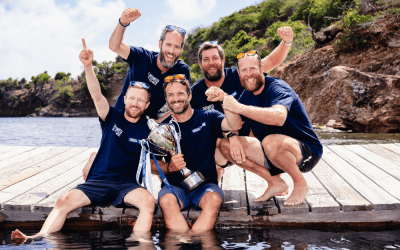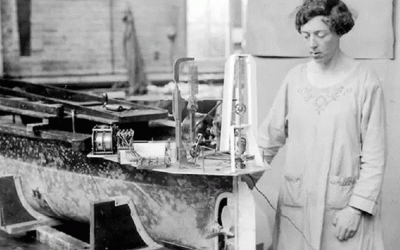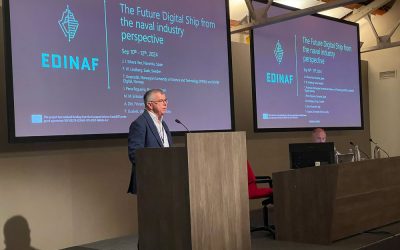Offshore Marine Technology: 3rd Quarter 2016
Isle of Wight-based boatbuilder Aluminium Marine Consultants (AMC) has teamed up with Norway’s Espeland and Skomedal Naval Architects (ESNA) to develop a new breed of crew transfer vessel (CTV) for the offshore wind farm support sector.
Similarly to Umoe Mandal’s Wave Craft class vessels Umoe Ventus and Umoe Firmus (see Ship & Boat International September/October 2015, page 40), the new CTV concept is set to incorporate surface effect ship (SES) design features into the finished unit. Popularised within Norwegian naval circles, the SES model deploys a hovercraft-style air cushion between catamaran hulls, typically lifting 80% of the vessel above the waterline for significantly fewer wave-induced motions and reduced fuel consumption.
Dubbed the ESNA Tern SES CTV, the new concept vessel would be fashioned from aluminium alloy, feature an overall length of 28.1m and an overall breadth of 10.6m, and would be designed to draw 3m in ‘off cushion’ mode, when the air cushion is not deployed, or 0.9m when it is. The vessel will have a complement of two to four crew members and between 12 and 24 turbine technicians.
Three advantages
AMC explains: “The area between the ESNA Tern SES CTV’s catamaran hulls is closed with flexible reinforced rubber fingers in the bow and an inflated rubber bag in the stern. This allows centrifugal fans to blow air into the enclosed space, providing an air cushion that lifts up to 80% of the vessel weight.
“In fact, the vessel can be lifted up and down approximately 2m, which means it is able to cancel up to the same height of vessel motion in waves. This is especially effective in long waves and/or swell, where all other vessel types will float and follow the wave surface” . The vessel is intended to enable safe turbine transfers in heights of up to 2m Hs in short seas, and up to 2.5m Hs in swell.
When in ‘on cushion’ mode, the remaining 20% of the CTV’s weight, meanwhile, would be supported by the buoyancy of the side hulls. The above set-up creates three key advantages, AMC says: firstly, the vessel is able to achieve high speeds, of approximately 40-44knots max, because the frictional resistance is significantly decreased; secondly, less contact with the waves equates to decreased wave-induced motions; and thirdly, the air cushion serves as a shock absorber, for enhanced seakeeping and decreased likelihood of passenger/crew seasickness.
Minimum resistance
The addition of a computer-controlled active motion damping system would also curb vertical motions at all speeds, for a smoother ride. AMC adds: “As the lift fans supply air to the air cushion, the control system actively controls vent valves that either ventilate the air cushion to a low pressure or close the valves so that the air cushion pressure is increased.”
Design-wise, meanwhile, the ESNA Tern SES CTV’s low profile would keep resistance to a minimum as well as limit the amount of wind-exposed areas on board, while its shallow draught would enable the model to be launched from harbours without tide restrictions. The vessel’s superstructure would also incorporate damping technology, to further reduce noise and vibrations.
The CTV will most likely incorporate a pair of waterjets, driven by two 1,080kW diesel engines, though a set-up of two 1,440kW units remains an option. AMC envisages that, in sea state 3 conditions, the vessel would be able to achieve a service speed of 28knots, increasing to 35-39knots max.



